Captain Cook Snorkel Tour Guide: From History To Adventure
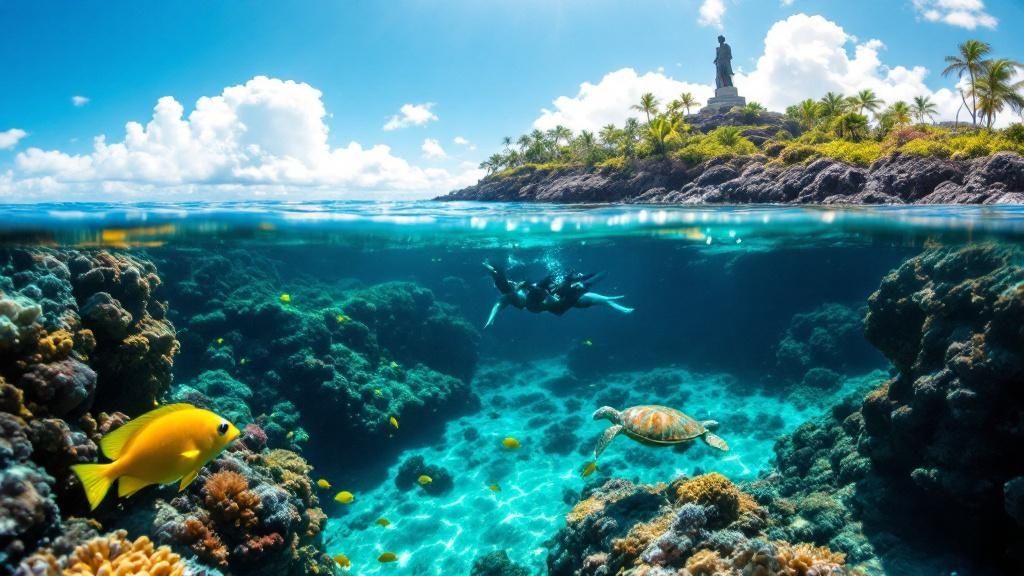
Why The Captain Cook Snorkel Tour Changes Everything
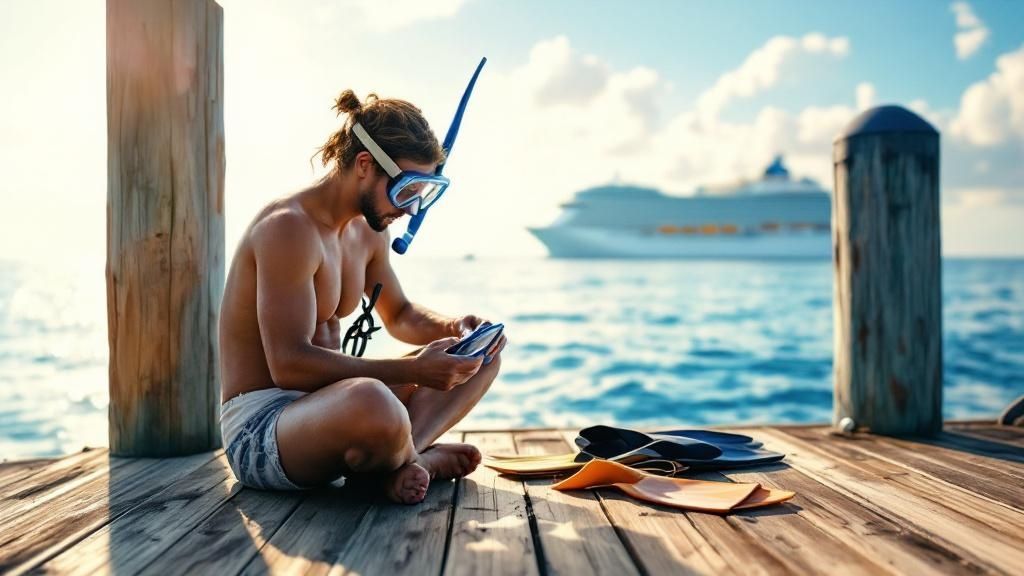
Imagine yourself suspended in water so pristine it feels like you're flying over a submerged city teeming with life. That isn't just a marketing line; it's the reality of a Captain Cook snorkel tour in Kealakekua Bay. This experience is a cut above other Hawaiian snorkeling destinations, thanks to a unique blend of natural geography and intentional conservation. These two elements work in concert to produce an underwater environment of incredible clarity and life, leaving new and experienced snorkelers equally speechless.
The Geography of Unmatched Clarity
The secret to Kealakekua Bay's magic starts with its physical form. The long, deep bay is hugged by towering volcanic cliffs that serve as a natural shield, warding off the powerful ocean swells and disruptive currents that stir up sediment elsewhere. Think of it as nature’s own infinity pool, perfectly protected from the rough-and-tumble of the open sea. This shelter means less runoff and sediment, resulting in underwater visibility that frequently tops 100 feet. This amazing clarity allows you to witness everything in stunning detail, from the delicate patterns on a fish to the hidden textures of the reef below.
A Thriving Underwater Sanctuary
The bay's flourishing ecosystem is no accident; it is the result of careful and deliberate protection. Kealakekua Bay is a designated Marine Life Conservation District (MLCD), which functions like an underwater state park. This special status places strict limits on fishing and other activities, creating a true safe haven where marine creatures can thrive without disturbance.
The results of this protection are easy to see:
- Fish populations are noticeably larger and show greater diversity.
- Marine life is less fearful, and animals often display a genuine curiosity toward snorkelers.
- The coral reef system is healthier and more brilliantly colored than in many unprotected areas.
This sanctuary effect is a primary reason the Captain Cook snorkel tour feels like stepping into another dimension. The dependable presence of abundant sea life attracts more than 190,000 visitors each year, cementing its status as a vital part of Hawaii's ecotourism. Discover more about its importance to the local ecosystem to understand its full impact. For many people, that first glimpse into this protected paradise is a deeply moving moment that reshapes their relationship with the ocean. You can learn more in our article about the complete tour experience to see what makes it so special.
Swimming Through Hawaiian History
When you slip into the waters of Kealakekua Bay, you’re entering more than just a world-class snorkel spot—you are immersing yourself in a pivotal chapter of Hawaiian history. Each kick of your fins takes you through the very place where Captain James Cook’s final voyage came to its dramatic end in **1779**, an event that forever changed the course for the Hawaiian Islands.
This bay is what's known as a wahi pana, a sacred and storied place with deep significance for Native Hawaiians. It was the site of a profound cultural collision, and understanding its story requires more than a quick read of a historical marker. It calls for approaching the area with respect, recognizing the deep ancestral connection between the Hawaiian people and this land and water. Today's tour operators often emphasize these cultural protocols, guiding visitors to be thoughtful guests in this special place.
The Monument and Its Meaning
The tall, white obelisk on the shoreline is a landmark that everyone on a captain cook snorkel tour will see. Erected by the British, this monument pinpoints the general area where Cook died. However, its presence tells only a fraction of the story. For many, it serves less as a memorial and more as a powerful symbol of the monumental changes and conflicts that followed European arrival, making it a point of deep reflection as you swim nearby.
To think of the monument as the main attraction is to miss the larger picture. The true history is written into the landscape itself—from the towering cliffs of Pali Kapu O Keōua to the waters that once served as a place of refuge. The obelisk is merely a marker for a narrative that is far more complex and deeply intertwined with the heritage of the Hawaiian people.
Modern Tours and Historical Storytelling
The best tour operators recognize Kealakekua Bay’s dual role as both a natural treasure and a historical cornerstone. They skillfully weave the story of Captain Cook, his arrival, and the events that followed into the boat ride, turning a simple excursion into an engaging history lesson. This combination is a major reason for the tour's popularity; it's estimated that nearly 70% of visitors are drawn to this spot specifically because it offers both incredible snorkeling and a rich historical narrative. Explore more insights on why this combination is so popular.
This educational focus is key to a meaningful visit. Guides often share perspectives from cultural experts to provide a more balanced view of Cook’s legacy and impact. For those wanting to know more about what to expect, a dedicated Captain Cook Snorkel Tour page offers further details on the itinerary. This commitment to storytelling ensures your underwater adventure is grounded in a respectful appreciation of the past, adding a new layer of depth to your experience.
Meeting Your Underwater Neighbors
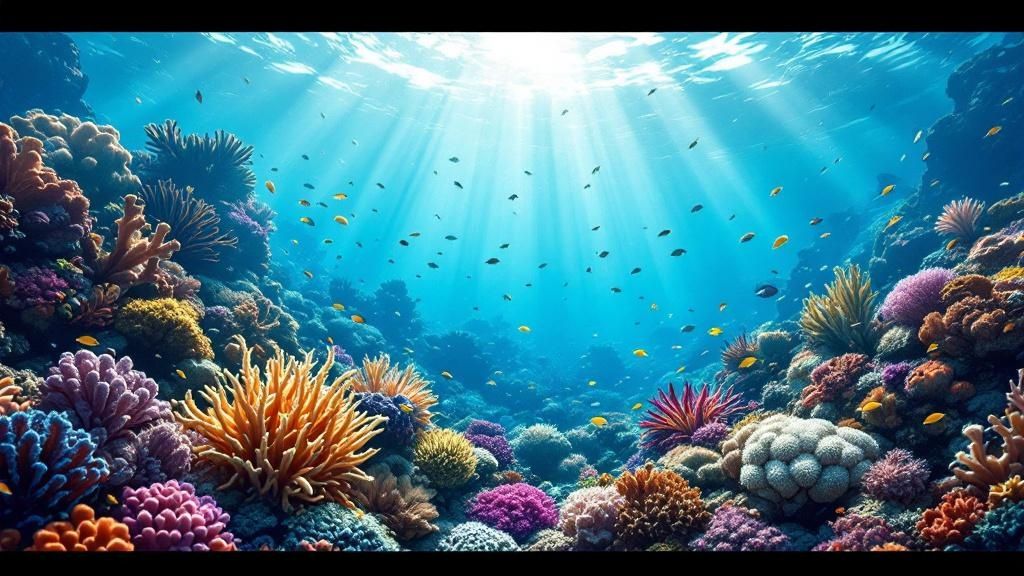
Slipping into the waters of Kealakekua Bay is like entering another world. It feels less like going for a swim and more like being welcomed into a vast, natural aquarium. Because the bay is a protected marine life conservation district, the underwater inhabitants are abundant and remarkably unafraid. Your captain cook snorkel tour provides a front-row seat to an ecosystem that has been allowed to truly thrive.
The experience is like stepping into a vibrant, underwater metropolis where you are the curious visitor. You’ll be surrounded by shimmering schools of thousands of bright yellow tang, moving in unison like living confetti. You might see a Hawaiian green sea turtle, or honu, drift by with an ancient and unbothered grace. Knowing a little about who you're sharing the water with makes every moment even more special.
The Regular Residents of the Bay
While no two days are ever the same, some species are such mainstays that you're almost certain to meet them. The fun part is learning to spot the different personalities of the reef. Marine biologists suggest looking for contrasts in color and patterns of movement against the coral.
To help you identify your new neighbors, here is a guide to some of the most common marine life you will see.
Common Marine Life Species in Kealakekua Bay
A comprehensive guide to the fish species, coral types, and marine animals you're most likely to encounter during your Captain Cook snorkel tour
| Species Name | Description | Best Viewing Tips | Photo Opportunities |
|---|---|---|---|
| Yellow Tang (Lauʻīpala) | Brilliant, oval-shaped yellow fish that often travel in large schools. They are the most iconic fish in the bay. | Look for large, moving clouds of yellow near the surface and along the reef's edge. They are very active. | Great for wide-angle shots that capture the scale of the school against the blue water or dark reef. |
| Parrotfish (Uhu) | Colorful, robust fish with beak-like mouths used for scraping algae off coral. They come in many colors. | Listen for a distinct crunching sound. They are crucial for creating the white sand beaches. | Try to capture a close-up of their unique "beak" and the vibrant patterns on their bodies. |
| Moorish Idol (Kihikihi) | A striking fish with bold black, white, and yellow vertical bands and a long, trailing dorsal fin. | Often found in pairs, they move gracefully around the reef. Their distinct shape makes them easy to spot. | Their dramatic look makes for excellent "portrait" shots. Frame them against a backdrop of coral. |
| Octopus (Heʻe) | The ultimate master of camouflage, this highly intelligent creature can change its color and texture instantly. | Look carefully in rocky crevices or for a "den" marked by a pile of discarded shells. It's a true challenge to find one. | A rare and rewarding shot. If you spot one, move slowly. Capturing it as it changes color is a once-in-a-lifetime photo. |
| Spinner Dolphins (Nai'a) | Long-snouted dolphins known for their acrobatic leaps and spins. They often rest in the bay during the day. | These are a bonus sighting. Look for them in the deeper parts of the bay, often traveling in large pods. | Use a fast shutter speed if you see them jumping. Photos from the boat are more common as they rest in the bay. |
This table highlights just a fraction of the life teeming below the surface. The key is to move slowly and keep your eyes peeled for any movement, big or small.
Rare Encounters and Capturing the Moment
Beyond the familiar faces, Kealakekua Bay sometimes offers truly magical sightings. On occasion, large pods of spinner dolphins cruise into the bay to rest in its calm, safe waters. Witnessing them is a genuine treat. Even rarer is an encounter with a silent, majestic manta ray gliding through the deep blue—a sight that will stay with you forever.
When these incredible moments occur, your first instinct might be to reach for a camera. To get the best shot without disturbing the wildlife, it's crucial to move slowly and predictably. Avoid splashing or making sudden gestures. A successful photo on any captain cook snorkel tour comes from patience and respect, allowing the animals to be comfortable in your presence. After all, you are a guest in their home.
Planning Your Perfect Underwater Adventure
The difference between a good day on the water and an unforgettable one often comes down to the planning you do before you even smell the salt in the air. Organizing your captain cook snorkel tour is like drafting a blueprint for your ideal day; every choice you make, from the boat you board to the sunscreen you pack, directly shapes your experience. A little preparation now ensures you can relax and fully immerse yourself in the adventure later.
Choosing Your Tour Style and Operator
Not all snorkel tours are cut from the same cloth. Your first big decision is whether you prefer a lively, large-group trip or a more personal, small-group setting. Think of it as choosing between a fun party bus and a private shuttle. Large boats often boast amenities like water slides and multiple decks, creating a social and energetic vibe. Smaller boats, in contrast, deliver a more focused experience with direct access to guides and less of a crowd in the water, which is perfect for new snorkelers or anyone seeking tranquility.
When you're comparing tour companies, look past the sticker price. Dive into recent reviews and see what people say about the crew's expertise, safety standards, and the condition of the gear. A higher price often translates to better value, such as having lifeguard-certified guides or a smaller guest-to-guide ratio, which can make a huge difference in your safety and enjoyment.
To make this choice easier, we've broken down what you can expect from different types of tour operators. This table compares group sizes, costs, and unique features to help you find the perfect match for your snorkeling style.
Captain Cook Tour Options Comparison
Detailed comparison of different tour operators, pricing, inclusions, and group sizes to help you choose the perfect Captain Cook snorkel experience
| Tour Operator | Group Size | Duration | Price Range | Inclusions | Special Features |
|---|---|---|---|---|---|
| Big Island Fun Cruises | Large (50-100+) | 4 hours | $100 – $140 | Lunch, snorkel gear, flotation, 1 drink | Double-decker boat with a 20-foot water slide, lively atmosphere. |
| Kealakekua Marine Adventures | Medium (25-40) | 4.5 hours | $140 – $180 | Deli lunch, premium snorkel gear, reef-safe sunscreen, snacks, drinks | Marine naturalist on board, strong educational focus, extended snorkel time. |
| Captain's Choice Charters | Small (6-12) | 3.5 hours | $170 – $220 | Snacks, drinks, high-end snorkel gear, wetsuit tops | Intimate experience, custom itinerary, high guide-to-guest ratio. |
As you can see, your decision comes down to a tradeoff. Larger tours are more budget-friendly and offer a party-like atmosphere, while smaller charters provide a quieter, more personalized, and educational adventure at a premium price.
Timing, Conditions, and Essential Gear
In Hawaii, timing can make all the difference. Morning tours are highly recommended because they almost always feature calmer waters and clearer visibility before the afternoon trade winds begin to stir the bay. To avoid disappointment, book your captain cook snorkel tour far in advance, especially if you're visiting during busy seasons like winter or summer.
Your most important piece of gear is your sunscreen, but not just any kind will do. Hawaiian law mandates the use of reef-safe sunscreen to protect the fragile coral you've come to see. This means choosing a formula without oxybenzone and octinoxate. It’s a simple step that helps preserve this underwater paradise for future generations. While tours provide quality snorkel gear, if you wear glasses, you may want to bring your own prescription mask for the clearest view.
To give you a clearer picture of the environment you'll be exploring, take a look at the typical conditions in Kealakekua Bay.
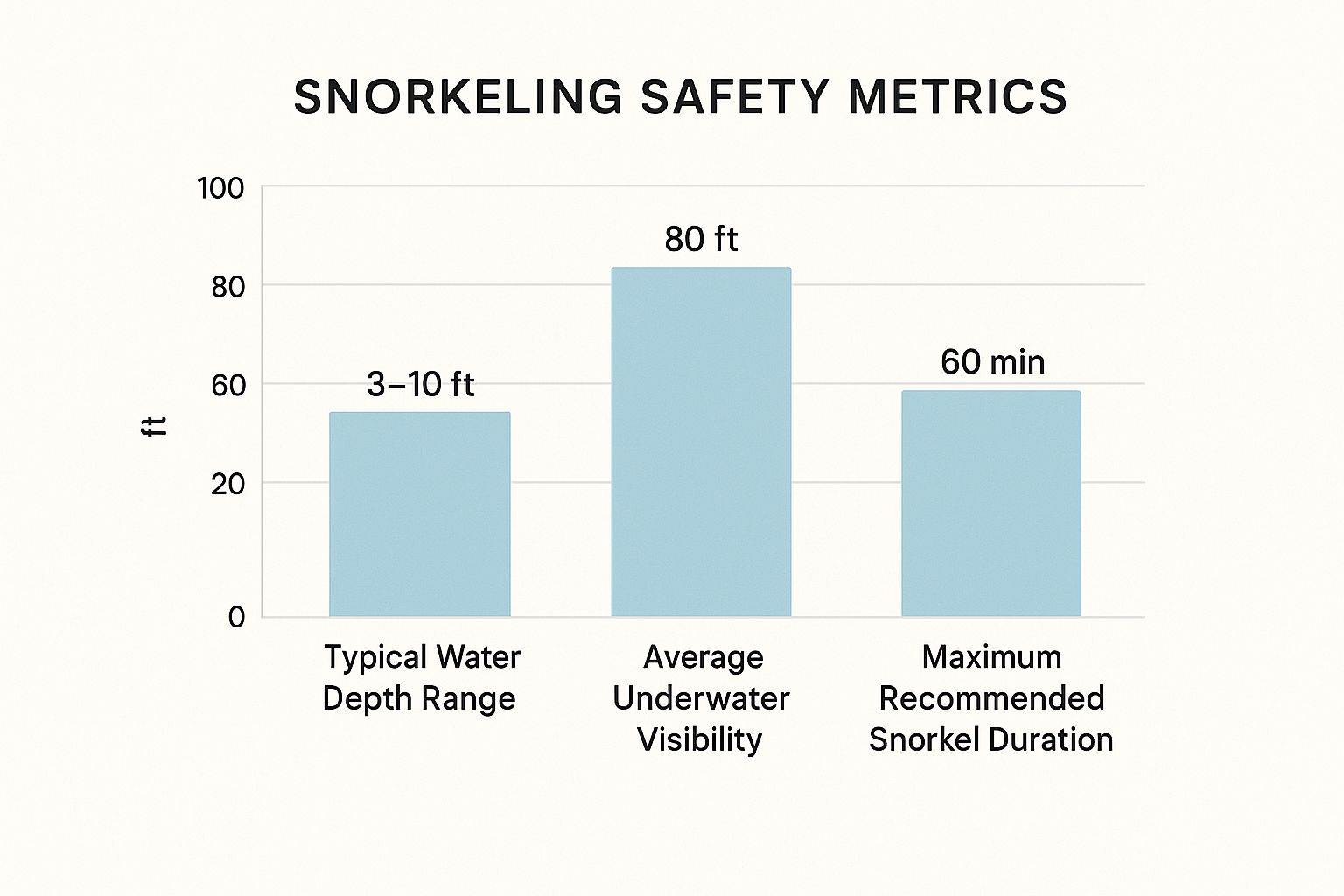
The data speaks for itself: the bay’s calm nature, combined with incredible visibility often reaching 80 feet, makes it an ideal spot for a relaxing and safe snorkel session that can last up to a full hour.
Practical Tips for a Flawless Day
A few final touches to your plan will help guarantee a comfortable, stress-free day on the water. If you're prone to motion sickness, it's a good idea to take medication before boarding or pack natural remedies like ginger candies. Once you're moving, keeping your eyes fixed on the stable horizon can also work wonders.
Here are a few key points to remember for a smooth experience:
- Swimming Comfort: You don't need to be an Olympic athlete, but you should be comfortable in the water. Remember, all tours provide flotation devices like noodles or vests, and the guides are always there to help.
- Hydration and Snacks: The combination of sun and saltwater can leave you dehydrated. Drink plenty of fresh water throughout the trip and enjoy any snacks your tour offers to keep your energy up.
- Listen to Your Guides: These professionals are experts on Kealakekua Bay's currents, marine life, and safety measures. Their instructions are your best ticket to a safe and amazing snorkel.
- Know the Site: The experience becomes much richer when you understand the historical significance of where you are. To get a preview of the monument and its story, check out our guide on snorkeling the Captain Cook monument.
Staying Safe In Paradise
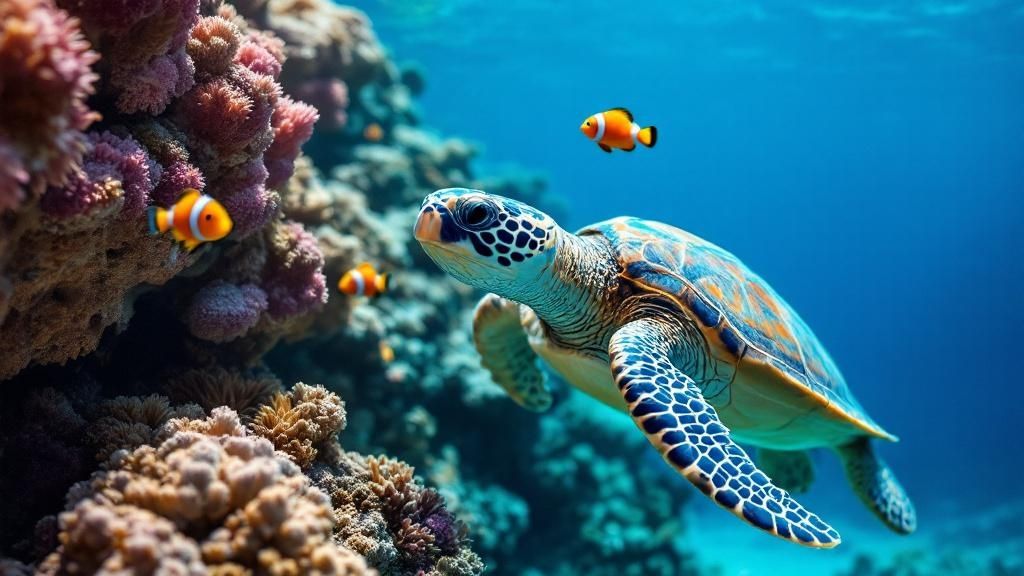
The incredible beauty of Kealakekua Bay is captivating, but the ocean is a powerful force that always deserves respect. Knowing and following key safety measures is what turns a good trip into an amazing one. This knowledge doesn't hold you back; it empowers you to relax and fully immerse yourself in your captain cook snorkel tour.
Your Guide Is Your Lifeline
Think of your tour guides as your expert navigators and safety coordinators for the day. Trustworthy tour companies hire crew members with professional training, such as lifeguard or dive master certifications. They are your most important resource once you're on the water.
Listen carefully during the pre-snorkel safety briefing. This is where the crew lays out the plan for a successful and safe experience. They’ll go over hand signals for communication, enforce the buddy system, and show you the clear boundaries of the snorkeling area. Following their instructions is key to keeping everyone safe and accounted for.
Navigating the Underwater Environment
Kealakekua Bay has a few unique conditions every snorkeler should be aware of. First, it’s a popular spot, so being mindful of boat traffic is essential. Your guides will set up safe zones to keep swimmers and boats in separate areas. Second, the stunning coral reef is a living, fragile ecosystem.
To explore it safely and responsibly, keep these tips in mind:
- Stay horizontal: Float on the surface of the water instead of trying to stand. This prevents you from accidentally damaging the delicate coral and protects your feet from sharp surfaces.
- Keep your distance: Enjoy the view of the reef from a few feet away. This simple step helps you avoid making contact with your fins or hands, which can harm both you and the coral.
- Mind the currents: Even in a protected bay, there can be subtle currents. If you feel a gentle pull, don't try to swim directly against it. Alert your buddy, stay calm, and swim parallel to the shore to move out of the current's path.
Choosing a Safety-First Operator
The best captain cook snorkel tour starts with picking a company that puts safety first. A responsible operator will be transparent about their safety standards. Look for companies that advertise their lifeguard-certified guides and keep their boats and snorkeling equipment in top condition. Reading reviews that specifically highlight a thorough safety briefing and an attentive crew is also a great idea.
Be on the lookout for red flags, like tour operators who seem rushed, provide worn-out gear, or are casual about enforcing safety rules. A quality tour invests the time to prepare you for any situation, which builds true confidence and turns a potentially nervous snorkeler into a capable ocean explorer.
Protecting Paradise For Future Generations
Your adventure in Kealakekua Bay is more than just a tour; it's an entry into a protected sanctuary. The bay is a designated Marine Life Conservation District (MLCD), a special status that serves as a promise to protect this underwater world. When you slip into these waters, you become part of that promise—a temporary guardian of this incredibly fragile ecosystem.
Your Actions Matter: From Sunscreen to Snorkeling Style
One of the most impactful choices you'll make happens before you even step on the boat: your sunscreen. Many common sunscreens contain chemicals like oxybenzone and octinoxate, which are devastating to coral reefs. When these chemicals wash off in the water, they can bleach coral, disrupt its growth, and harm its ability to reproduce.
The solution is simple and effective. By choosing a reef-safe, mineral-based sunscreen, you prevent these harmful substances from entering the water. This single action is one of the most powerful ways to help keep the reef healthy and vibrant for everyone who comes after you.
How you move in the water is just as crucial. Picture the coral reef as an ancient, living city built over centuries. A single touch from a hand or an accidental kick from a fin can shatter coral structures that took decades to grow. To avoid causing damage, the golden rule is to never stand on or touch the coral. Try to stay horizontal in the water, floating calmly, and keep a respectful distance. This allows you to marvel at the intricate details without leaving a destructive mark.
This "look, don't touch" philosophy applies to all the bay's inhabitants. It’s a magical moment when a sea turtle (honu) glides by, and the instinct might be to reach out. However, touching them is not only illegal but also incredibly stressful for the animal and can transfer harmful bacteria from our skin. The best encounters happen when you give them plenty of space. By moving slowly, you allow them to behave naturally, often resulting in a much more rewarding observation.
Choosing to Make a Difference
Kealakekua Bay faces real pressures from issues like climate change and the sheer number of visitors. Your choice of a captain cook snorkel tour plays a direct role in shaping the bay's future. When you book with an operator that is serious about conservation, you're casting a vote for sustainability.
These companies do more than just follow the rules; they actively educate their guests, enforce eco-friendly practices, and often contribute to local preservation projects. They understand that sharing this natural wonder comes with a profound duty to protect it.
By supporting businesses that work to minimize their impact, you become part of the solution. Taking a few minutes to learn the proper etiquette is an essential step, and you can find excellent guidance on Big Island snorkeling etiquette to prepare. This knowledge transforms you from a visitor into an active steward, helping to leave this underwater paradise healthy for all future generations to enjoy.
Getting The Most From Your Investment
When you book a Captain Cook snorkel tour, you're not just buying a ticket; you're investing in a core memory of your Hawaiian vacation. Prices can vary from budget-friendly group outings to exclusive private charters. Knowing what's behind those price differences helps you pick the perfect experience for your day on the water.
Decoding the Price Tag: What Are You Paying For?
Think of it like booking a flight. An economy ticket and a first-class seat both get you to your destination, but the quality of the journey is worlds apart. The same is true for snorkel tours.
The biggest factors are often the boat's condition and the number of people on board. A lower price tag might mean you're sharing the boat with over 50 other guests. A premium tour, on the other hand, often uses a smaller, more intimate vessel for fewer than 15 people. This difference means more elbow room on deck and a less crowded experience once you're in the water at Kealakekua Bay.
The price also reflects the crew's skill and what's included. Top-tier operators hire lifeguard-certified guides who are not just there for safety but can also point out hidden marine life. The cost covers high-quality gear that won't leak, plus snacks and drinks to keep you comfortable and energized.
Smart Booking Strategies and Protecting Your Purchase
While Hawaii is beautiful all year, booking in the shoulder seasons (like fall and spring) can sometimes mean better availability and fewer crowds. More importantly, before you click 'book,' always read the cancellation policy. A trustworthy company will have a straightforward policy that gives you peace of mind.
Look for one that offers a full refund or a free reschedule if they have to cancel because of rough seas or bad weather. This protects you from losing money over something you can't control. Be cautious if a policy seems fuzzy or mentions hidden fees for making changes.
Finding a great operator is about looking for transparency. They'll proudly display their safety credentials, have lots of recent, positive reviews that talk about the crew, and clearly list everything included in the price. A lack of recent reviews or no mention of certified guides can be a red flag.
Setting Expectations and Asking the Right Questions
Regardless of your budget, doing a little homework ensures your tour lives up to the hype. To avoid any surprises, match your expectations to your chosen tour and don't be shy about asking questions before you pay.
An informed traveler gets a better trip. Before you confirm your booking, be sure to ask:
- What is your guest-to-guide ratio in the water?
- Are your guides lifeguard certified?
- What is your cancellation policy for bad weather?
- Are there any additional fees I should be aware of?
For a tour prioritizing safety and expert guidance, explore your options with Kona Snorkel Trips.
